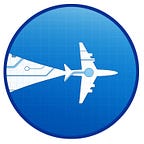Pilots of the crashed Ethiopian Airlines Boeing 737 Max were unable to prevent the plane repeatedly nosediving despite following procedures, resulting in a fatal crash 6 minutes after take-off. This, just a few months after a Lion Air flight of the same aircraft exhibited similar behavior moments before its fatal crash. The Chinese Aviation Authority became the first regulatory body to ground the B737 Max aircraft, and on March 13 Caijing Magazine wanted to get more facts about the crashes and safety measures being put in place to mitigate on-going safety concerns.
Caijing: Pilots repeatedly voiced safety concerns about the Boeing 737 Max 8 to federal authorities. Do you see the Boeing model as having design flaws?
Aermetric: Flawed might be the wrong word — it’s less a question of flaws and more a question of a potentially outdated design. The B737MAX is a brand-new aircraft but it’s based on a 1960 design. Minor updates have been made generation to generation in order to keep the plane up to date with current safety and efficiency standards, but the core design itself hasn’t been greatly altered in nearly 60 years. It’s too soon to tell, but if the incidents between Lion Air in October and Ethiopian Airlines in March are connected, it could be a sign that the 1960 Boeing 737 design has reached its limit.
Caijing: The investigation of the Ethiopia crash is in its initial phases — as the authorities analyze the plane’s flight-data and cockpit-voice recorders, what else should be they focus on? What are the major concerns?
Aermetric: We need to know what we’re dealing with first and foremost, once the root cause is discovered, the much-needed non-speculative discussions can be had. One major concern is that the Ethiopian Airlines and Lion Air crashes were caused by the same faulty system. However, while it’s natural to assume a link between the two because of the similar flight characteristics in the minutes leading up to their crashes, the incidents may not be related in root cause, so it’s important for investigators to remain unbiased. All data — from crash site data, to high fidelity (FDR) data, as well as lower fidelity flight messages pertaining to the Maneuvering Characteristics Augmentation System (MCAS) — are crucial to quickly determine the root cause of the crash. Additionally, Boeing should review how the MCAS performed through flight test and certification to ensure nothing was missed during aircraft development. And, of course a global conversation is in order — if airlines can help in the investigation by citing similar problems during flight they should.
Caijing: U.S. flight attendant unions asked their carriers and the U.S. government to ground Boeing 737 Max planes until more is known about the latest crash — what are U.S airlines doing as precautionary measures?
Aermetric: Aermetric is dedicated to creating a safer and more reliable travel experience so we applaud China and its aviation authorities for being the first to ban the aircraft. The rest of the world soon followed in suit, and as of today the B737MAX is banned in all countries. Prior to the global ban multiple US Carriers informed passengers if they were about to board a B737 MAX aircraft and gave them the option to deplane. The weight of recent events will not soon be unfelt, and airlines need to continue to insure they’re going above and beyond in pilot training, safety measures, and maintenance. The good news is technology now exists to better position airlines to prevent such tragedies — by utilizing predictive capabilities like those engineered by Aermetric, airlines can actually begin to leverage data to show that an incident is imminent before it happens.
See the full article here
Aermetric is empowering aircraft operators to take control of their data. To learn more visit us at www.aermetric.com or check out our Medium Page!
